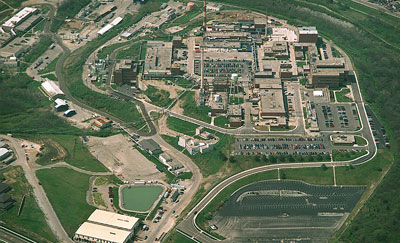


The Mound Site The Mound Laboratory was first established in 1943 in Dayton, Ohio. Initially the laboratory was selected to produce large quantities of polonium. The role of the lab grew over time to include: nuclear weapons component development and production; some non-weapons related work including radioactive waste management and recovery; and the purification of isotopes for commercial research. The facility played an integral role in the development, manufacturing, and evaluation of explosive components for the nuclear defense stockpiles. 
In that same year of 1943, Monsanto’s Dayton Laboratory began research work related to the chemistry and metallurgy of polonium. This activity was known as the Dayton Project. The Dayton site’s primary activity involved the extraction of polonium (Po-210) from feedstock from Hanford to fabricate atomic bomb irradiators. The initial work took place at the Mound facility known as Unit I. Over time, due to the growth of the project, it was moved to several different locations in the Dayton, Ohio area. In 1946, it became evident that a permanent polonium production facility was needed. The site selected for the permanent production facility was Miamisburg, Ohio (Unit V). The original facility, completed in May 1948, consisted of 14 buildings. Polonium processing began in February 1949. During the early years of the Dayton Project, Monsanto operated a separate facility for the production of rocket propellant (Unit II). This facility handled ammonium picrate and ammonium nitrate. The Mound production facility (Unit V) was involved in many areas of research and production from 1949 through at least 1995 (when all weapons related work was terminated). Some of the activities included: Weapons Program – Activities associated with the weapons program included: research; development and production of detonators; timers, transducers and switches; and nuclear components. Stable Isotope Program – The major efforts conducted within this program included: development of isotope separation methods for biomedical applications; molecular science research; and isotope separation research and development. Tritium Recovery Program – The Mound Plant received tritium-containing scrap materials from other DOE sites, which it recovered and purified for future use. The Mound site became a closure site in 2006, and is now known as the Miamisburg Closure Project. The Project receives approximately $90 million annually to clean up the 306 acre Mound site. The current workforce includes DOE and CH2M Hill Mound, Inc. Past contractors included: Monsanto Research, Inc. 1947-1988; EG&G, 1988-1997; Babcock and Wilcox 1997-2003. |